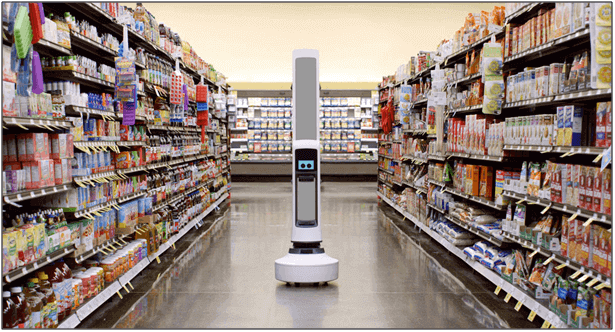The Industry 4.0 era (also known as the “fourth industrial revolution”) is upon us and manufacturing companies around the globe are increasingly embracing automation and data exchange and implementing new technologies including cyber-physical systems, internet of things (IoT) devices, cloud computing, artificial intelligence (AI), machine learning, robotics, and advanced data analytics.
Digital technologies are providing the tools to improve traceability, trust and ultimately shape food supply chains to withstand the predicted challenges of the future. A rapidly growing urban population and increased consumer awareness regarding sustainability are prompting food companies and manufacturers to employ digital solutions to ensure product quality. They include investing in technological innovations with a focus on food processing, safety, and packaging to distinguish themselves in an intensely competitive marketplace. Here are my recommendations:
Table of Contents
Augmented Reality (AR) Technology
Companies can now print AR labels in various verticals thus offering a better user experience. This leads to more satisfied user expectations which in turn will lead to brand loyalty. Effectively what the augmented reality packaging does is that it gives the customers a platform to interact with the product.
It also allows brands to increase the effectiveness of their targeting efforts. Brands usually have a wide variety of products each geared to a particular segment of the audience. By utilizing AR, they can better cater to this audience segment and provide a more customized user experience. Bets of all, for business, is easy since any label can be slightly augmented to redirect users to see any content that you would like them to see.
As far as the benefits for the shoppers, augmented reality in food and beverage industry can give them a lot of information about the product such as country of origin, nutrition information and even more technical details such as test results and certificates. The best AR brands can even be more creative and show pictures of the farm or factory where the product was made. Using AR technology, all this information would be available in a moment’s notice and can lead to better shopping decisions.

Drone Technology
The advancement of technology has changed with time and drones used in agriculture are a very ideal example of this. In modern times, agriculture is among the major companies to include drones. Drones are being utilized in agriculture to improve various practices of farming. The processes that surface-based and air-based drones are taking care of in agriculture are irrigation, crop health assessment, crop spraying, crop screening, planting, and analysis of field or soil.
Advantages of utilizing drones include crop health imaging, ease of use, integrated GIS mapping, potential to improve yields and save time. With planning and strategy based on existing data gathering and processing, the drone technology offers a high-tech makeover to the farming domain.
Farmers using a drone to capture data on crop growth, monitor weather patterns, and control water and energy usage. They also use predictive analytics to understand soil and air quality, as well as labor and equipment costs, to make more informed decisions. Furthermore, the collection of such accurate data also holds the potential to be a powerful research tool. By collating the data gained from drone use from multiple farms, this dataset can then be used the monitoring of large-scale change across a region, allowing researchers to explore trends and a wider set of farming practices, thus helping to optimize agricultural systems all over the world.

Predictive Analytics Technology
Predictive analytics is an advanced technique that uses algorithms to predict future outcomes based on historical data. Technically it applies the theory of probability to derive what may happen in the future based on past experiences. Ultimately, it’s used to anticipate future behavior by tracking historical data to establish patterns and make predictions accordingly.

For example, managers can leverage predictive analytics when looking to find the shortest and fastest route that takes into consideration conditions such as weather, traffic, mileage, dwell time and so on. This complex task can be made simple with the use of predictive analytics so that logistics managers can rest assured that drivers will be able to reach their planned destinations at the right time.
Predictive Analytics technology is helping to improve traffic monitoring and data analytics in the transportation sector. It enhances detection accuracy and turns the collected data from cameras and sensors into valuable insights. The insights can be used for event prediction to prevent road traffic injuries, eliminate peak-time traffic congestion, and enhance operational efficiency or for future planning of traffic infrastructures.
Robotic Technology
Robotics carry out quick and routine full-store audits. The hovering robot uses data analytics, Artificial Intelligence, image recognition, and machine learning to deduct price errors, out-of-stock situations, and provide real-time insights. Powered by the core technologies of cloud and API, Tally is helping Target solve inventory issues, increase revenues, and improve customer satisfaction.
Tally captures data on inventory levels and whether products are on the correct shelves. The technology allows users to restock specific items in the shelves, access real-time sales data, and answer customer queries. Technology is helping employees reduce the burden of inventory management and shift them from the backroom to the sales floor. The autonomous mobile robot can operate safely around people during regular store hours, enabling employees to focus on customer service and restocking items. By rolling out robots in an effort to save money and boost their effectiveness in carrying out the rote, repeatable tasks that are prone to human error.

Blockchain Technology
Blockchain build trust in the food supply chain. With a blockchain track-and-trace solution, it was traced in seconds. This technology is advantageous for everyone in the industry. When outbreaks of food borne illness occur, the restaurants or grocery stores that served the food are often left wringing their hands, promising to get to the bottom of it. Blockchain track-and-trace will help them immediately track affected items to their origins, locating the issue quickly so they can remove the contaminated products from menus, shelves, and supply chains. Through the latest blockchain initiative, all participants in the global food supply chain will have access to trusted information detailing the origin and state of food per transaction. With better record keeping, it would become much easier to trace products that are contaminated straight to the source, it fast enough to prevent diseases from spreading.
The full content is only visible to SIPMM members
Already a member? Please Login to continue reading.
References
Agritechtomorrow.com. (2019). “Smart Agriculture With The Advent Of IoT And Drones”. Retrieved from: https://www.agritechtomorrow.com/article/2018/07/smart-agriculture-with-the-advent-of-iot-and-drones/10890, accessed 20/06/2019.
Flatworldsolutions.com. (2019). “Impact of 3D Printing on the Food Industry.” Retrieved from: https://www.flatworldsolutions.com/engineering/articles/3d-printing-impact-food-industry.php, accessed 20/06/2019.
Karin Wang Huijuan, ADPSM. (2019). “Blockchain Visibility food supply Chain”. Retrieved from SIPMM: https://publication.sipmm.edu.sg/blockchain-visibility-food-supply-chain, accessed 20/06/2019.
Martin, R. (2019). “Data Analytics and Data Prediction in the Food Industry”. Retrieved from: https://igniteoutsourcing.com/it-outsourcing/data-analytics-prediction-food-industry, accessed 20/06/2019.
Michelle Lee Ean Wei, ADPSM. (2019). “New Technologies impact future supply Chain”. Retrieved from SIPMM: https://publication.sipmm.edu.sg/new-technologies-impact-future-supply-chains/, accessed 20/06/2019.
Transport Topics. (2019). “Opinion: Using Predictive Analytics for More Efficient Supply Chains”. Retrieved from: https://www.ttnews.com/articles/using-predictive-analytics-more-efficient-supply-chains, accessed 20/06/2019.

